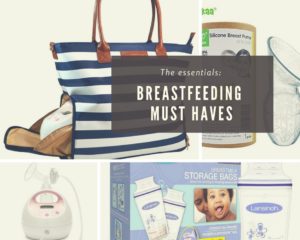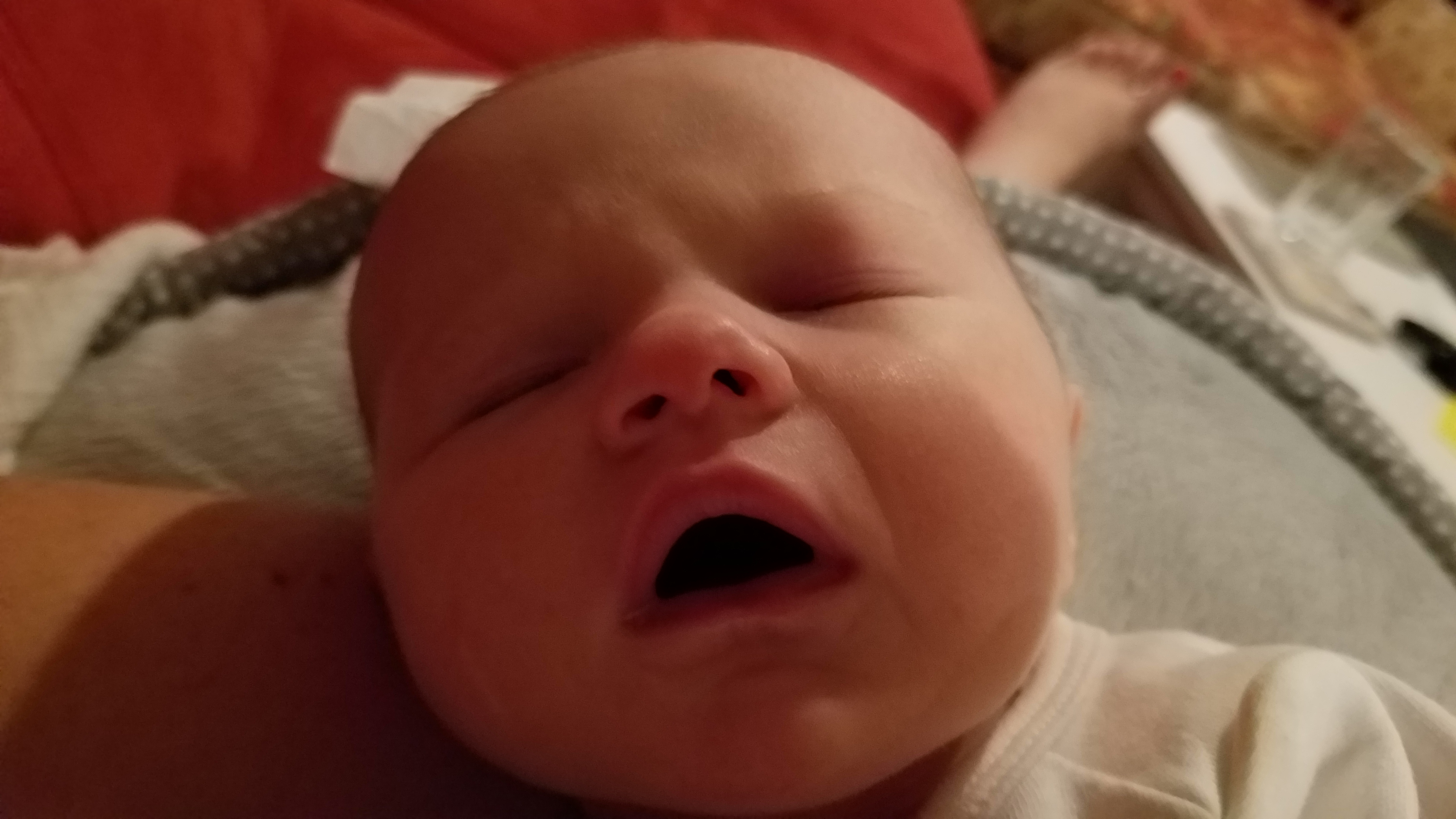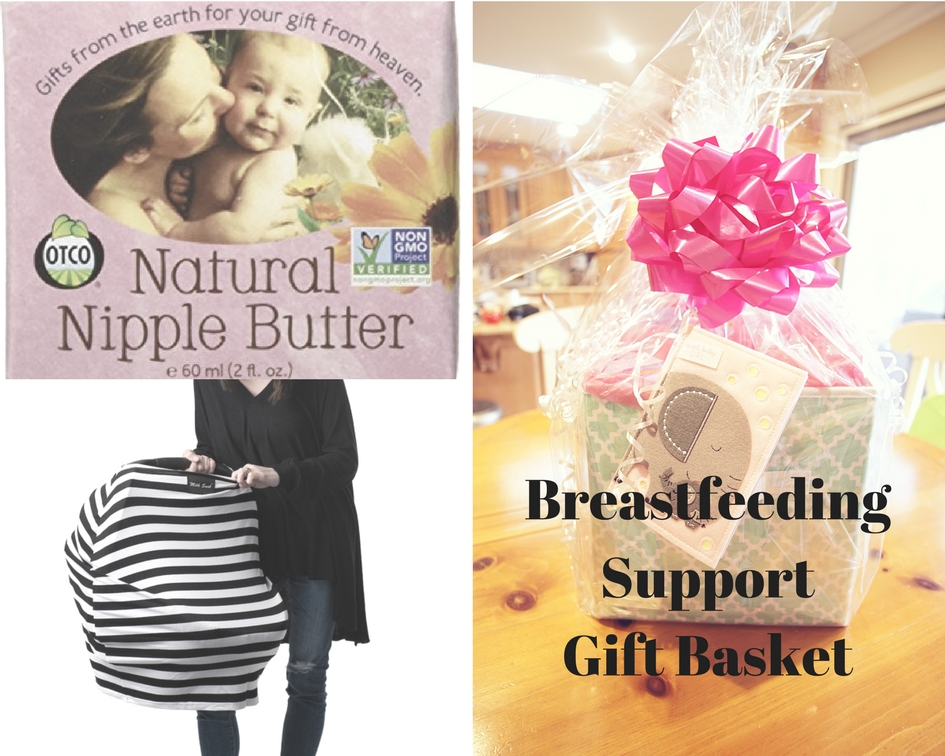Breastfeeding Must Haves
Registering for your baby shower can be overwhelming. I had very little experience with newborns and was clueless as to what I needed. Worse, I was sucked into believing I needed a LOT of things that I didn’t ultimately need. 14 months later, here’s my best advice for breastfeeding must haves.

Breastfeeding is free! Except for…
If you’re like me, one of the selling points of breastfeeding was the price…free. However, like anything, all those little accessories add up. From cheapest to the most expensive, here is what I recommend for breastfeeding must haves.
Duckbill Valves: The standard valve for the Medela pump is a yellow piece of plastic with a white silicon sheet that is virtually impossible to get off without dropping on the floor or down the drain. Impossible to hold with gloves on, I’d end up scalding myself just to clean and rinse the little suckers. These duckbill valves are much easier to get on and off, and I felt they reduced the pump pressure on my nipples without sacrificing output. Here are the Medela PISA, Avent, Spectra and Avent, and Amenda pump compatible valves. Not sure which pump to get? See the section below (it may be covered under your insurance, so make sure you check it out before registering for one!).
Pads. Your first month or two nursing, you’re going to need some TLC for your nipples.
- Many hospitals will give you a starter set of these soothing gel pads from Lansinoh. To prevent infection for both you and baby, you’ll need to change them every three to four days, so register for a few sets. These Silverette Nursing Cups are ten times as expensive, but also last forever. I didn’t find out about them until I was two months post-pardum, but I wish I would have had them earlier.
- Pick up some Lansinoh Pure Lanolin or Earth Mama Natural Nipple Butter to slather on to your sore nipples. Both are all natural so you don’t have to wash off before you feed baby (many are not). I alternated between the two.
- You’ll also want pads for your bras to catch any drips and dribbles. (In those early days, even thinking of your baby and hearing her cry can cause you to express milk!) These Lansinoh disposable pads can be thrown in to your purse or bag for emergencies and have a sticky backing to stay in place. I also really liked the Bamboobies reusable ones that I could toss in the laundry.
Pumping Bottles. The Medelas are great because most regular pump users will eventually switch to Medela pump parts anyway. They’re cheap and easy to find, so you might as well get yours from the start. This 6 bottle set should be all you need (you’ll probably get two to four with your pump anyway, so you’ll be set). Most people won’t need bottles any bigger than 5 ounces (I know from experience they actually hold up to 6 ounces.)
Freezer Bags. I tried three different types of storage bags and the Lansinoh were the best of the three. I have heard good things about the Target Up and Up brand as well, but in my experience the Lansinoh are thick and leak a lot less than the other bags I used. You may want to try and start a small “stash” before you head back to work, so you may end up needing the bags a lot earlier than you were expecting.
Let down solutions. When you nurse, for the first several months, you’ll have a sympathetic let down. What is that you ask? As you nurse your little one on one side, milk will still come out of the other! What happens to that milk? It can leak all over your clothes, be absorbed by a breast pad that gets thrown out, or you could collect it to start a little “stash”. My two suggestions for saving that milk are the Milkie’s Milk Savers and the Haakaa Silicon Pump.
- The Milkie’s Milk Saver slides into your bra. A cut out on the inside allows the milk that is naturally expressed to collect in the reservoir. When you’re done, the storage case acts as a holder. Just be careful not to lean too far forward or back, or the milk will spill out. Some feedings I might collect an ounce or so when my daughter was a newborn; others I might only get a few drips. Regardless, it saved a lot of my clothes and was a great way to start a freezer stash without having to spend a single second pumping!
- The Haakaa Silicon Pump solves the same problem. Simply squeeze the silicon body and hold the cup opening over your nipple. As your release, it will gently suction on and collect milk as it is naturally expressed, plus a little more from the gentle suction. When I no longer had a sympathetic letdown, I could still get some milk using the Haakaa.
- If you’re deciding between the two, I’ll give you a few pros and cons of each. For the Milie’s Milk Saver – Pros: Easy to just put in your bra and forget it. Cons: Can spill out or overflow; has to wear a bra so not always easy to use at night; only useful the first few weeks when you still have a sympathetic letdown. For the Haakaa – Pros: Uses suction to express milk even after you lose your sympathetic letdown. Cons: Can be difficult for some to attach with one hand; tips over easily; measurements on the side are nowhere near accurate; can lead to an oversupply if used too frequently in the first few weeks of nursing.
Nursing and Pumping bra. You’re going to need nursing bras and pumping bras. There are a lot of nursing bras on the market. I loved the selection at Motherhood Maternity, especially their shelf-bra tanks with clips for around the house and discreetly feeding in public with the two-shirt method.
The most common pumping bras are basically a bandeau with two holes cut in them. Cheap and no frills, the bandeau-style can sometimes be hard to get it zipped up, especially if you’re engorged and having to squeeze in. The Simple Wishes is a popular choice because it goes on loose and uses velcro to tighten up. For work, I loved the Rumina Pumping Bra which had a place to hold your horns built right into a crossover style bra. With nothing to put on or take off, I could be up and pumping in two minutes with this bra!
Horns. You will most likely get a pair of horns and hoses with your pump. Even the stripped down insurance pumps will come with them! You’ll probably want at least one extra pair. Whatever pump you’re using, the Medela-style ones are popular and affordable. They come in different sizes, so test out the free ones before you register or order a specific size. Not sure what to get, these Pumpin Pals are more expensive, but are SO comfortable and come with multiple sizes so you can get a perfect fit.
Horn Alternative. Last up are the Freemie Cups. Instead of using a pumping bra, these fit into your regular bra. They have a hard shell with a reservoir and internal duckbill and tubing. Once in place, you can only see the tubing coming up from the neck of your shirt.
If your lifestyle demands them, they’re a great option. If you pump at your desk at work they’d be a discreet option. I have visions of some awesome woman out there pumping on the train or bus into New York City with them.
However, I am a heretic. I found that I would overfill them (thanks oversupply) which caused more problems than they solved. I also found pouring out of them into storage bottles was tricky (the directions that come with them tell you to practice). Oh yeah, and you still need to pack bottles – so twice as much to pack and wash every day. Lastly, if you didn’t get your nipple in the hole perfectly (which is hard to see since this is all done on the inside of your bra), you can easily pull them out at the end of the session and find you haven’t pumped any milk! That all said, most of my friends who have used these, love them.
Working Dairy Cows
If you’re nursing and going back to work, you’re going to have to plan for pumping. While I love nursing and could go on about the benefits for days, there is not a single positive thing I can say about pumping. Yes, it gets your baby cheap and nutritious breast milk, but it sucks (pardon the pun).
I got a Sara Wells Pump bag for Christmas in 2016 and it worked great. After pumping at work for seven months, it’s in pretty good shape (except for one zipper that’s starting to fray). Is a Sara Wells Pump bag, a necessity? No. But, if you have room for a few big ticket items on your list, this would be a good one to put on. It’s not easy (but possible) to find a bag in which you can comfortably carry your pump, horns, bottles, towel, etc, keep your pump milk cold, and still be able to quickly access everything and this bag does it all!
Many of the things on your registry you’ll use only a few times. (I’m looking at you crib quilts and wipe warmers.) A pump bag you’ll be using 5 times a week for months. I didn’t start to wean until my daughter turned one, so I pumped for 9 months. That’s 190 times I carried that bag in and out of my house. Plus, when we had to travel out of town, the bellhop discretely unloaded it from the car with the rest of the luggage.
If the Sara Wells bag is a stretch, I still recommend the Pumparoo Bag. This bag has a waterproof interior to carry your wet horns and bottles between pumping sessions. There’s a side pocket to carry pump wipes, extra tubing or membranes, and a granola bar. The other side has a waterproof map that snaps on and off and gives you a clean surface to lay your pumping gear out before and after your pumping session. Using ziplock bags every day is wasteful and expensive. With this, I could stash it in my work fridge without raising my coworkers eyebrows. At night, I used my bottle brush to clean it out, rinse with hot water, and pull the white, water-proof interior to dry. Genius!
One pump bag accessory you may want to consider are Medela pump wipes.You can throw your pump parts in your Pumparoo bag and toss it in the fridge or freezer during the day and not worry about the milk in the parts. But, what if a fridge isn’t convenient? After you’re done pumping, quickly wipe down everything with these wipes-no water needed-and throw back in your Pumparoo bag to use again. These aren’t a replacement for washing your parts at night, but can be a lifesaver during the day.
One last thing you’ll want for your pump bag is a 9V or 12v adaptor, depending on your car and pump. I pumped in the car to work and sometimes on the way home. It meant finding one or two less times in my day to pump and was a lifesaver! In the car, you can’t hear the pump making it’s wheezy little noise, making it the least burdensome pump of the day!
A word on bottles
There are a lot of considerations that go into your bottle choice. I really wanted glass bottles, so we went with Dr. Brown’s. The system is supposed to prevent colic and gas, but had 6 different parts for each bottle! The new “Choices” system from Dr. Brown’s allows you to use all the parts when baby is small and subject to tummy upset, and then use without them after baby doesn’t need them any more. The beginner system comes with Size 1 nipples, but you’ll need the size 0 nipples as well. That’s it! For a breastfeeding mom, you’ll never need more than a four ounce bottle or nipple larger than 1. (I also really liked these Munchkin Bottle Brushes because the bottom screws off exposing a nipple brush.)
A word on breast pumps
Speaking of Pumps, there are two main pumps I usually see women choosing. The Medela Pump In Style (PISA) is covered by most insurances. The “Advanced” style includes a carrying bag and cost more through my insurance (the pump itself was completely free). If you don’t want to buy a more expensive pump bag, you might way to spend the extra money and order the Advance through your insurance. The pump itself is a “open system” pump, meaning you’ll need a new one with each baby. (The open system means that milk can get into the gears and motor and cause mold after extended use). It’s not sexy and has no features, but it’s easy to use and is a work horse. Designed to work well on the go, it sits in its own box and has all the controls on one side of its face. Parts are easy to come by and relatively cheap. Most big box stores (and even my local Walgreens) carry Medela brand or compatible, and you can find off-brand compatible parts easily on Amazon.
The other popular pump is the Spectra S2. This is a closed system pump, meaning you can share it among users and use it for multiple births. (No milk enters the system itself preventing mold from growing over time). The Spectra has a battery backup, independent speed and strength controls, lifetime pumping minutes counter, back light, and is just cute. I saw one of these in action at my weekly lactation support meeting once and was in awe. My Medela worked its butt off for over a year and doesn’t owe me a dime. However, if I had to do it again, I’d probably get the Spectra. For a first baby, the Spectra would also allow one to save it as a back-up-pump for any future children since it’s a closed system. It’s also half the price as the Medela, so if my insurance didn’t cover a breast pump, I’d definitely get the Spectra.
So, my advice: check your insurance. At press time, breast pumps are still covered by insurance so see what you can get from them first.


